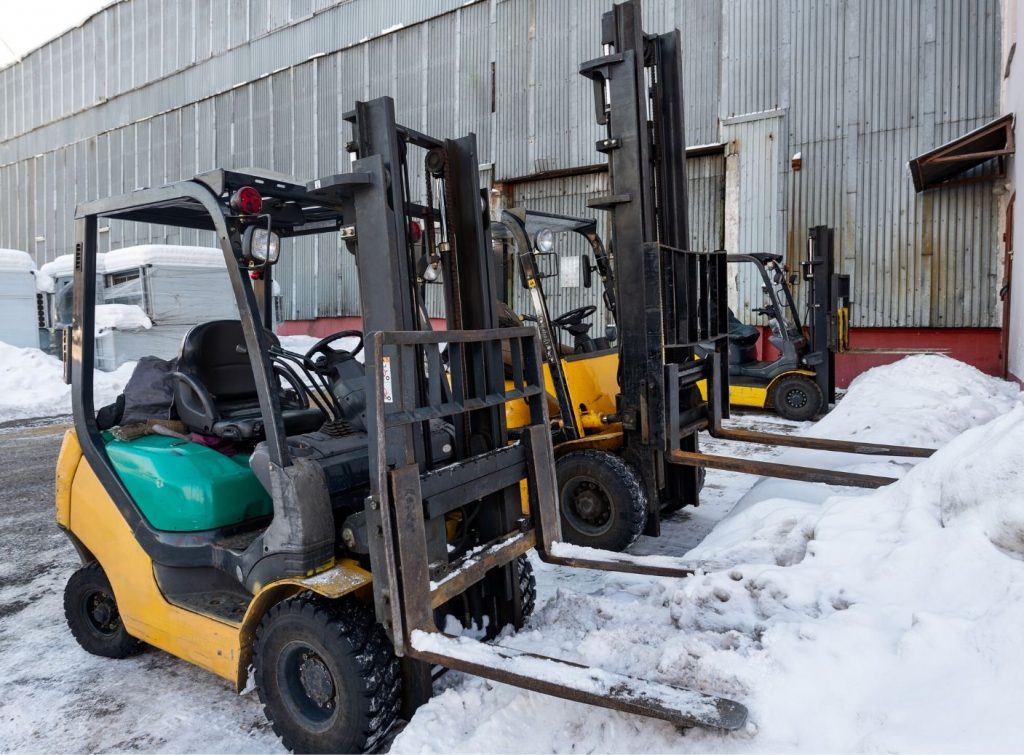Forklift Training & Certification
How to Properly Operate a Forklift in Winter Conditions
Driving a forklift in ideal conditions indoors can be intimidating on its own. Throw some snow, ice, and cold into the mix and it can be flat out frightening and dangerous. Moving a forklift across a frozen lot is difficult, even on a fork truck that is designed for the conditions. Modern designs and innovations in fork trucks have made it easier to operate in less-than-ideal conditions. Whether it’s cold rain, flurries, or a blizzard, following a few basic rules will keep you safe and moving. The outdoors offers many challenges for a forklift operator. Rough terrain (RT) forklift training (focused on the Class VII forklift) from First Quality Forklift Training is the best way to ensure your staff knows how to operate safely in the winter. Here, we offer some expert tips on how to properly operate a forklift in winter conditions.
Warm up the Forklift
Most people will start their car and let it warm up in the morning before leaving for work on cold mornings. Use the same practices with a forklift. It’s good to start it up and let it idle for a few minutes to warm up all the oils, fluids, and parts. Operating a cold engine can lead to problems with the transmission, exhaust, and hydraulics. Waiting for a few minutes will prevent a host of problems in the long run.
Check All the Parts
Before starting the forklift, make sure that it’s ready for outdoor use in extreme cold. Prior to operating any powered industrial truck, a thorough pre-shift inspection needs doing. The parts most affected by cold, wet weather are the batteries, hydraulics, electrical systems, and engine. All systems should be a part of the pre-shift check. Check the air pressure on all the tires to ensure that they are at the recommended PSI for the conditions. Over-inflated tires won’t have the proper traction and grab on icy ground.
Drive at an Appropriate Speed
This might seem like a no-brainer, but many forklift drivers are short on time and drive faster than they probably should. A driver that feels rushed will drive over icy and rough terrain at a speed that puts themselves and their load in jeopardy. There are many hazards in the wintertime that don’t exist in the summer. Black ice and snow make that fork truck handle worse and increase stopping time. All these adverse conditions make driving at a slower speed the necessary—and responsible—choice.
Be Aware
Never travel in a direction the obstructs your view. Be aware of the terrain you are traveling over and the load’s stability to decrease an accident’s likelihood. Bumpy and icy terrain will increase the load’s instability, so increased situational awareness is vital. Stay focused on the load, truck speed, and terrain and keep both hands on the wheel to stay ready for anything.


